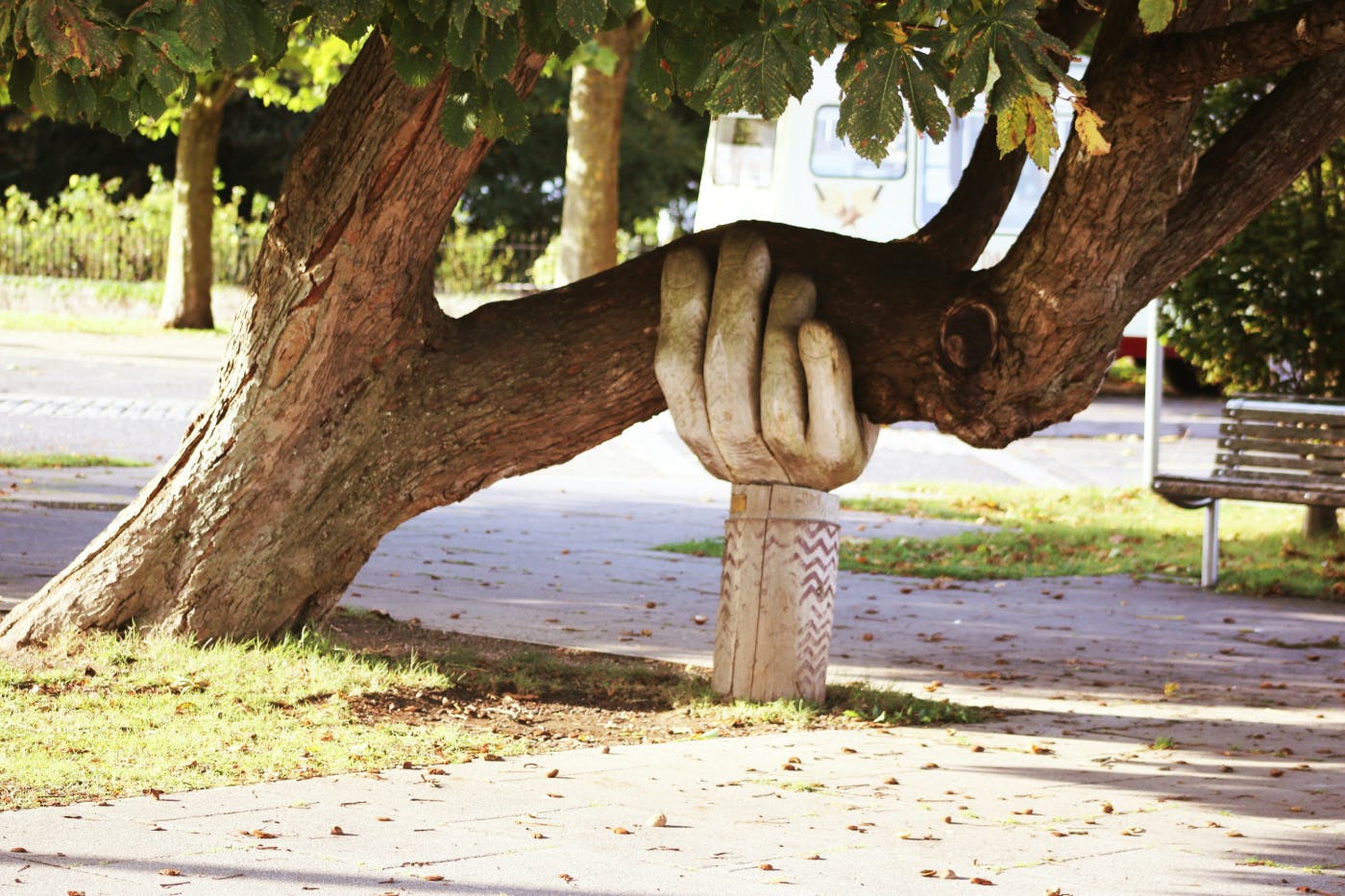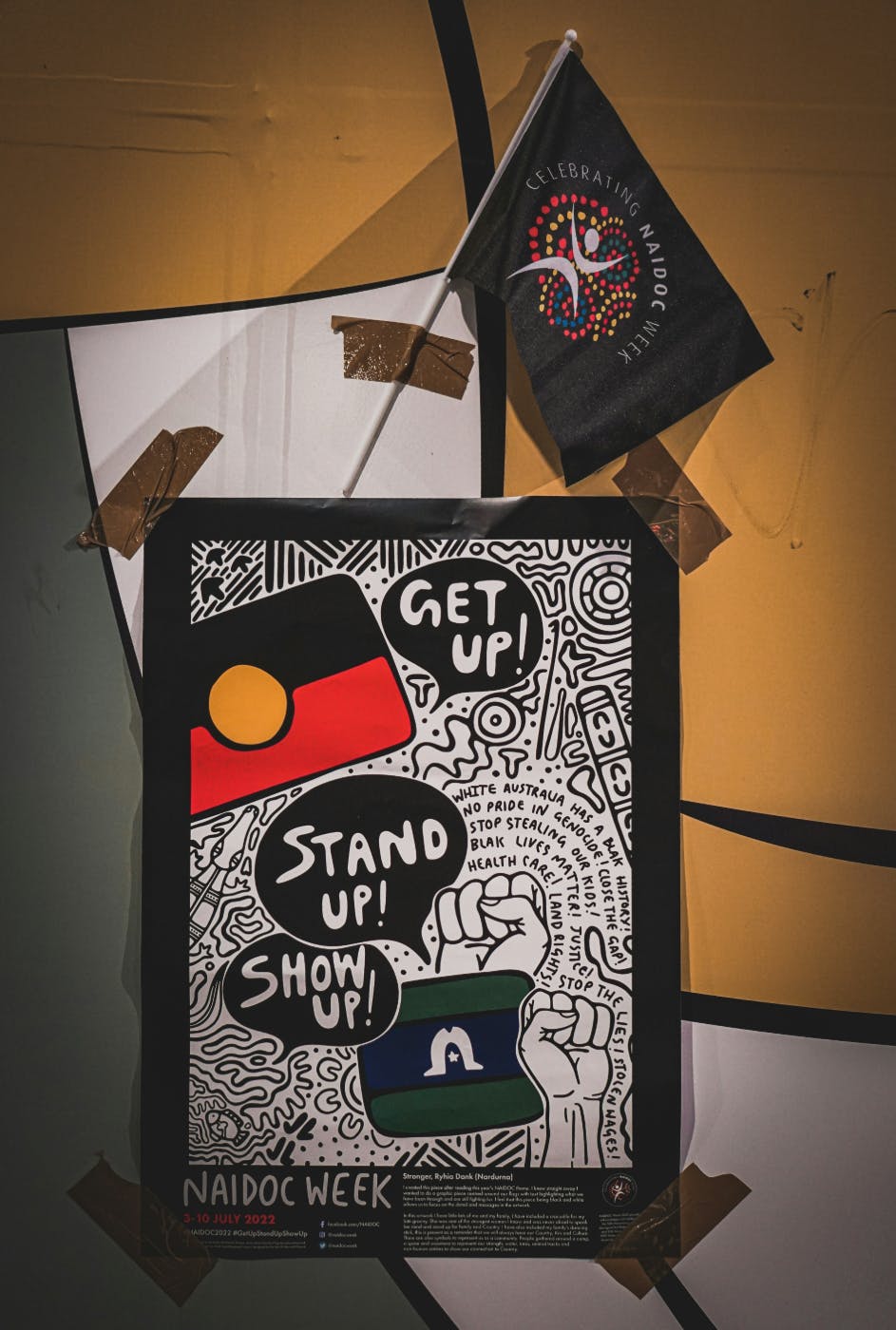

For brands, it’s a dangerous crossroads: the urge to help can get tangled up with the temptation to be seen helping.
Recently, in my little port town of Port Angeles, a tanker truck hauling some kind of noxious chemical rolled off the road and into a ditch. It burst open and began spilling fuel across the ground, into the grass, and straight into the Elwha River. This poor river had just been reopened to salmon after years of being dammed. It also happens to be the main water supply for our town.
One morning, we all woke to texts and calls from the sheriff’s department: Do not drink the water. Toxic stuff, baby—don’t imbibe. We were directed to the Civic Field parking lot—the same place we gather to cheer on our Port Angeles Lefties—for bottled water distribution. Pulled straight from Costco shelves, cases were handed out efficiently and without chaos.
Except for one bejeweled house Dame in a white Cadillac—with the requisite poodle—who cut into the front of the line after hundreds of cars had waited over an hour and a half. Aside from that small act of civic theater, the whole operation ran smoothly. Pallets of water sat under a big tent. Forklifts unloaded more from trucks. No banners. No megaphones. Just water, delivered.
It wasn’t until later that I read that Costco had supplied the bottled water. And oddly, they hadn’t posted any signage—no “Courtesy of Costco” or “Helping Our Neighbors” slogan. At first I thought, that’s strange—shouldn’t they take credit? But then it clicked: this was a disaster. The focus wasn’t on being seen. It was on getting things done.
I was there. I got water for myself, my friend, and her daughter. I was in line at 7 AM and had a case on her porch by 8:10. Bravo to the Port Angeles police and DPW. Despite the warnings and the fear, people got help. The river was cleaned. By the end of the day, we were bathing, washing, and drinking from the tap again.
It made me wonder: in times of disaster, how should a brand show up? Is it possible to help without turning it into a campaign? Can a brand just show up—offer kindness and support—and not shout, “Look at me! I care!”? Or, if they do say it, can they do it without sounding like bloviating attention-grabbers?

The Temptation of Crisis Clout
When disaster strikes, attention follows. News vans show up. Hashtags trend. Eyes turn toward the epicenter—hungry for updates, footage, and feel-good stories of heroism. For brands, it’s a dangerous crossroads: the urge to help can get tangled up with the temptation to be seen helping.
Some rush in with real resources and quiet resolve. Others arrive with film crews.
That’s where things get messy. The moment help becomes a photo op, the brand stops looking like a partner and starts looking like a parasite. Even well-intentioned efforts can backfire if they feel too polished, too loud, or too self-congratulatory. Suddenly, the public isn’t saying “thank you”—they’re saying, “read the room.”
We’ve seen it before: the cringeworthy campaigns that try to turn tragedy into engagement. A soda ad trying to solve social unrest with a smile. Corporate logos tinted in the colors of whatever flag is in the headlines this week. Hashtag empathy that evaporates the moment the spotlight fades.
In those moments, brands aren’t offering support. They’re chasing clout. And people can tell.
The line between showing up and showing off is razor-thin. Good intentions aren’t enough if the execution feels hollow or performative. So, what are the signs a brand has crossed that line? Let’s look at what not to do when stepping into a crisis.
What Not to Do: The Ghoul Playbook
There’s a special kind of brand misstep that only shows up during disasters. It’s not just tone-deaf—it’s opportunistic, theatrical, and ghoulish. These are the moves that turn goodwill into backlash, and they’re easier to stumble into than most marketers would like to admit.
1. Centering the Brand Instead of the Cause<br /> If your logo is bigger than the aid you're providing, you're doing it wrong. Crises aren’t commercial breaks. When a brand uses a moment of public suffering to spotlight itself rather than the people affected, the message becomes clear: we’re here to be seen, not to help.
2. Offering Empty Gestures<br /> A tweet with no action. A hashtag with no follow-through. A vague statement about “standing with the community” that leads nowhere. Consumers are smarter than ever—they can spot empty empathy from a mile away. If you’re not doing something concrete, best to say nothing at all.
3. Tying Help to Engagement<br /> “If this post gets 10,000 likes, we’ll donate water to wildfire victims.” No. No, thank you. Help should never be conditional on attention. It turns generosity into a transaction and positions aid as a reward for clicks, not a response to need.
4. Jumping Into Irrelevant Crises<br /> Not every disaster is your brand’s business. If your product has no connection to the crisis at hand—logistically, emotionally, or geographically—stay in your lane. Helping where you're not equipped can feel invasive or out of touch, no matter how good your intentions are.
5. Making It All About the Optics<br /> When the help comes with a press release, a glossy promo video, and a branded hashtag before a single dollar or resource is distributed, audiences notice. There’s a difference between documenting impact and directing a marketing campaign. People can tell when they’re being sold a story instead of shown real support.
Avoiding the ghoul playbook is a good start, but steering clear of bad behavior isn’t the same as showing up well. Doing it right takes more than silence or subtlety—it takes clarity, care, and commitment. So what does it look like when a brand shows up with genuine support?

What To Do: The Supportive Brand Blueprint
When a brand gets it right in a crisis, it doesn’t look like marketing. It looks like help.
No fireworks. No ego. Just calm, focused action—offering real support to the people who need it, in a way that aligns with the brand’s values and capabilities. The best crisis response doesn’t chase attention. It earns respect. Here’s how.
Act First, Post Later<br /> If you're helping during a crisis, don’t lead with a press release. The work should come before the narrative. Act quietly and urgently. Do the thing that matters, and if the story gets told, let others tell it.
Offer Real, Tangible Support<br /> Don’t just “stand in solidarity”—stand up with something people can use. That might mean goods, funds, services, shelter, technology, or transportation. Whatever you give, make it count. Vague vibes don’t help. Resources do.
Stay in Your Lane, But Step Up<br />You don’t have to save the world. Just do what you are uniquely equipped to do. A rideshare company offering free evacuations during wildfires? That makes sense. A shoe brand trying to weigh in on water contamination without a plan? Not so much. Match your strengths to the moment.
Keep It Quiet. Keep It Human.<br /> You don’t need a slogan. You don’t need a campaign. You don’t need applause. When in doubt, default to humanity. Show empathy. Focus on the people, not your brand. The more you let your actions speak, the more clearly they’ll be heard.
Partner with People Who Know What They’re Doing<br /> If you're not a relief expert, find someone who is. Partnering with trusted nonprofits, local leaders, and grassroots orgs is not just smart—it’s respectful. Let them lead. Follow their guidance. Amplify their work, not just your presence.
Follow Through After the Headlines Fade<br /> Support isn’t a one-day photo op. Crises have long tails, and communities often need more help after the spotlight moves on. Brands that stick around—quietly, consistently—earn trust that can’t be faked or bought.
Of course, it's easy to list best practices. It’s harder to live them, especially under pressure. But some brands have managed to walk the walk, showing up with quiet resolve, real impact, and zero need for applause. Let’s look at a few who got it right.
Case Studies: Brands Who Did It Right
Not every brand that shows up in a crisis fumbles the moment. Some get it right—not because they chase attention, but because they respond with alignment, humility, and action. These brands don’t just appear during the storm. They stay through the cleanup.
Airbnb: Open Homes, Real Help<br /> In the wake of natural disasters, political upheaval, and war, Airbnb has quietly offered free stays to displaced people through its Open Homes and Airbnb.org initiatives. Refugees, evacuees, and emergency responders have all benefited. Airbnb doesn’t lead with billboards or splashy campaigns. It simply opens doors—and lets others walk through.
Patagonia: Activism in Its DNA<br /> Patagonia doesn’t just support environmental causes in times of crisis—it’s built into who they are. When wildfires rage or water supplies are threatened, Patagonia funds recovery efforts, amplifies the voices of local activists, and puts money behind policy change. Their support doesn’t feel opportunistic because it never starts with the disaster. It starts with their values.
World Central Kitchen Partnerships: Food First, Credit Later<br /> Chef José Andrés’ World Central Kitchen has become a go-to for disaster relief, and many brands have followed their lead, not for PR, but for purpose. From logistics companies providing trucks to local businesses donating kitchens and ingredients, these partnerships often remain in the background, letting WCK’s mission stay front and center. It’s a model for how brands can plug into something bigger than themselves without hijacking the spotlight.
Local Heroes: Small Brands, Big Impact<br /> Sometimes, it’s the neighborhood brewery turning its taproom into a charging station, or the corner grocery giving away fresh food before it spoils during a blackout. These smaller, often family-run brands don’t go viral—but they go vital. And for the communities they serve, that matters more than a million views.
These examples remind us that it is possible to get it right—that brands can offer help without turning tragedy into a spotlight. But even with the best intentions, not every effort lands well. Because in moments like these, it’s not just about what you do—it’s about how it’s received.

Why Intent Isn’t Enough
Intent is where action starts—but it’s not where trust is earned. In crisis moments, audiences aren’t just listening to what a brand says or does. They’re reading between the lines. Tone, timing, delivery, even silence—all of it matters.
That’s because trust is emotional, not transactional. And when people are scared, grieving, or angry, they become hypersensitive to any hint of manipulation. What might feel like a generous gesture from inside the brand boardroom can come across as self-serving, hollow, or even exploitative from the outside.
The hard truth? You don’t get to decide how your support is received. The public does.
That doesn’t mean brands should stay quiet or do nothing out of fear. It means they need to approach crisis moments with humility, empathy, and a willingness to listen. Brands that center people over optics, impact over narrative, and action over applause are far more likely to be embraced, even if their efforts aren't perfect.
Because in the end, people don’t want brands to be flawless. They want them to be real—to show up for the right reasons and stick around after the cameras leave.
That’s the real measure of a brand in crisis—not how fast they post, but how long they stay. Not what they say in the moment, but what they do after the noise fades. So, where does that leave brands trying to do the right thing?
Summing Up: Show Up, Don’t Show Off
When disaster strikes, brands face a choice: step in with substance or step back with grace. There’s no playbook that guarantees praise, but there are patterns—ways to help that feel real, grounded, and human.
The brands that get it right don’t center themselves. They don’t wait for a trend. They don’t treat pain as a PR opportunity. They act quickly, thoughtfully, and with purpose. They understand that visibility isn’t the goal—impact is.
And sometimes, the most powerful branding is no branding at all. Just people helping people. Just water in a parking lot with no banner in sight.
At ThoughtLab, we believe the best brand stories are earned, not scripted. When your values show up in action, you don’t have to shout. People will notice. And more importantly, they’ll remember.
